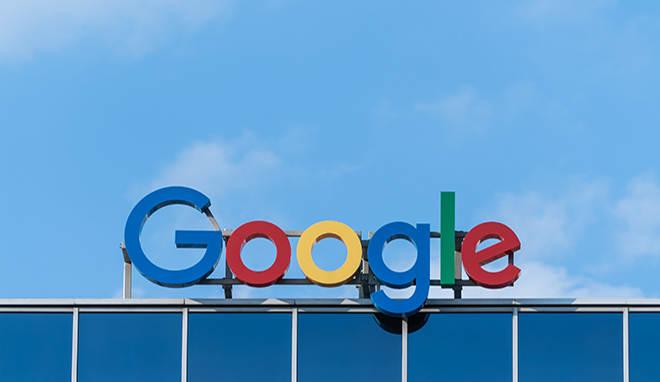

Après des études littéraires, de sciences politiques et de gestion de projets, Célia a enchaîné les expériences dans le monde de l’édition puis sur des projets de communication en France et à l’étranger.
Until recently, reproducing an edible dish in three dimensions was the stuff of films or TV series (such as Star Trek or Back to the future). Now a firm reality, this technology has cleared the way for a new form of cooking, along with a whole host of hitherto unexplored culinary possibilities! While 3D printed food has yet to receive a warm welcome from most chefs and restaurateurs (no doubt for fear that it could ultimately replace them), it may well prove beneficial for some, especially in terms of creativity and efficiency!
How does a 3D food printer work?
To clearly understand what 3D printers have to offer for restaurateurs, we need to know exactly how they work. Basically, a 3D food printer works like a standard printer: the foods are applied, like ink, on a base (pastry, biscuit, plate, etc.), layer after layer. The printer reproduces a pattern or design – drawn or programmed beforehand by a human via a touch screen – using ingredients that are selected and placed in one or more containers.
What 3D food printers can do:
3D food printers are still in their very early stages. As yet, they are unable to reproduce ready-to-eat meals using fresh ingredients. But they are on the right track…
What existing 3D printers can do:
- Spread, fill or ‘draw’ shapes and patterns (e.g. writing a name on a cake using a coulis, applying icing in patterns, spreading tomato sauce, melted cheese, etc.)
- Creating 3D ‘sculptures’ (sugar cubes, flowers, chocolate shapes)
What 3D food printers can’t do:
- They can only work with foods that have already been transformed into a paste, purée or liquid. This limits the type of basic ingredients, since not all foods can be mixed or puréed.
- They can’t mix different ingredients, cook what they have made, or assemble the shapes created.
- All the recipes, designs, etc. have to programmed beforehand via a touch screen. It’s also up to the cook/chef to pour the liquid ingredients into the capsules or containers used.
Prospects of 3D food printers
The advantages of these technologies were established via two conferences, held in 2015 and 2016 and intended to explore the possibilities of 3D food printers. The prospects turn out to be far-reaching:
- Reducing food waste: food printers are able, among other things, to reuse what was previously considered as food waste, create edible cutlery or containers, and utilize all parts of the available foods.
- Practicality: 3D food printers can prepare dishes in exceptional situations, for example, where there are no cooking facilities (NASA astronauts already use this technology).
- Guaranteed balanced meals: 3D food printers can be programmed to create balanced meals, with all the necessary nutritional and calorific intakes. They can thus potentially help to combat bad eating habits by quickly preparing balanced meals at home or in canteens. They can also conceive personalized meals and thus meet the dietary needs of each and everyone.
- Dishes that are easy to eat: food printers can re-create foods (e.g. a soft carrot) or create dishes whose consistency makes them easier to chew, while retaining their nutritional properties. This could benefit elderly people or people who have difficulty swallowing. In this respect, Europe has already financed a project to design food more suited to elderly people.
- Fighting hunger throughout the world: by using available foods more efficiently, or by using alternative resources (in whole or part) that are otherwise unpalatable/inedible.
- Creating new-generation foods, designed using protein from algae or insects, then reconstructed as edible ingredients.
What these technologies have to offer for the restaurant industry
- Augmented creativity 2.0: the new possibilities afforded by this technology for creating as yet unknown culinary objects, never-before-seen shapes, etc. pave the way for gastronomic innovations that are still in their infancy.
- Mass customization: using food printers, restaurateurs will be able to deliver made-to-measure cooking, i.e. adapting recipes to each and everyone depending on their needs or diet, as well as to customize shapes, patterns, the foods themselves, etc. for a large number of customers, on demand.
- Efficiency and economy: quickly devising dishes with less waste thanks to optimal use of the raw materials involved.
 In recent years, food printers have increasingly been used for decorative purposes in areas such as confectionery, pastry-making, ice-cream and chocolate-making.
In recent years, food printers have increasingly been used for decorative purposes in areas such as confectionery, pastry-making, ice-cream and chocolate-making.
Existing models
A fairly wide variety of 3D food printer models can already be found on the market: on the one hand, general-purpose machines, such as Foodini (the first to reach the market) or Bocusini, which can both use fresh foods to print all sorts of products, from biscuit to pizza.
On the other hand, specialized food printers that focus on a given type of product in particular:
- Chocolate, as with the Choc Edge Ltd machine, which prints superb chocolate creations. Or American brand Hershey, which has teamed up with 3D Systems to design a food printer than can create truly unique chocolates.
- Sugar, as with the ChefJet Pro by 3D Systems Culinary Lab which can create sculptures made of sugar.
- Pasta: Barilla has also helped to develop a food printer, in the shape of the TNO Pasta Printer, the first food printer dedicated to pasta, and which offers unlimited customization possibilities.
History has yet to determine whether these 3D food printers will go down as mere gadgets in the restaurant industry, or whether they are destined to become a daily tool that will help restaurateurs with their task, but without ever replacing them. In any event, 3D food printing offers singular possibilities in terms of creativity, efficiency and customization that will inevitably arouse the interest of many chefs. In London, the first restaurant to offer dishes created using the 3D printing technology opened its doors in 2016. The dishes are prepared right in front of the customers, where the “show” is part of the establishment’s identity. The story has just begun…











Comments
Daniel Kingt
the 3d printer will be useful in the future for nasa space and colonies not to include provide more food on earth year round so i think it is our future for the earth to survive with this methoid and its more than a fad,